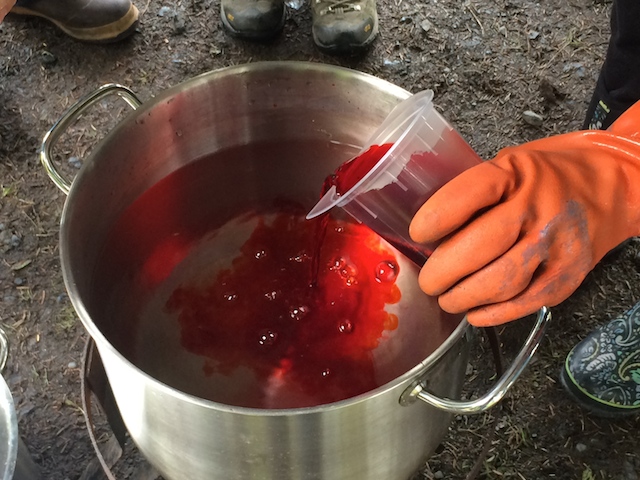This week: Basically everything you need to know for dyeing silk with cochineal
Every week, we are emailed with questions from our natural dye community asking simple and complex questions that we thought might be worth sharing. Of course, all of your burning questions are answered by natural dyer in chief, Kathy Hattori, Founder of Botanical Colors.
I want darker colors on my silks. I am dyeing yarns. With my cochineal extract however, I cannot get anything darker than a midd-ish depth of color. Nice color but I need deeper. So I want to overdye or re-dye or whatever it is called. I have looked everywhere for this answer.
Do I have to re-mordant?
When do I have to re-mordant if I want to dye the yarns again?
Is there a source I can look at about getting better darker colors?
Help is on the way.
- No remordant needed. A more purple/magenta shade comes from using aluminum sulfate only, you get redder/pinker shades and depth of shade with about 3-5% cream of tartar in the dyebath.
- If the shade is too pale, it’s possibly a water issue. Mineralized water (heavy in calcium and magnesium and total dissolved solids – TDS) will inhibit cochineal development. Weld loves highly mineralized water, so it’s exactly the opposite.
- Cochineal dyes on the way up to temperature, at temperature and in cool down, so it is possible to leave it in the dye pot overnight for deepest shades. It also needs a very hot dye bath – 170-180F and a long dye time of (minimum) 60 minutes.
- The key to darker color is absolutely diligent scouring to ensure cleanliness of the yarn and for cochineal specifically, softer water. You can try RO water or distilled water if your water is hard.
- If you are using silk with a lot of sericin (the protein coating), Orvus alone won’t remove it. You’ll need to add a very small amount of soda ash, like 0.25-1% maximum. If your silk is very white (charmeuse, habotai) then use the lower amount. Tussah and raw/noil silks use the larger amount.
- Higher amount of alum mordant for deeper shades, especially with the red colors
- Impeccable scouring and cleanliness of the fibers
- Use up to 3% wof cochineal extract and 10% insects for deepest shades
- Cream of tartar in the dye bath or in extracting insects creates a redder shade and enables good color development
- Water must be demineralized.
- Long dye time at fairly high temperatures

